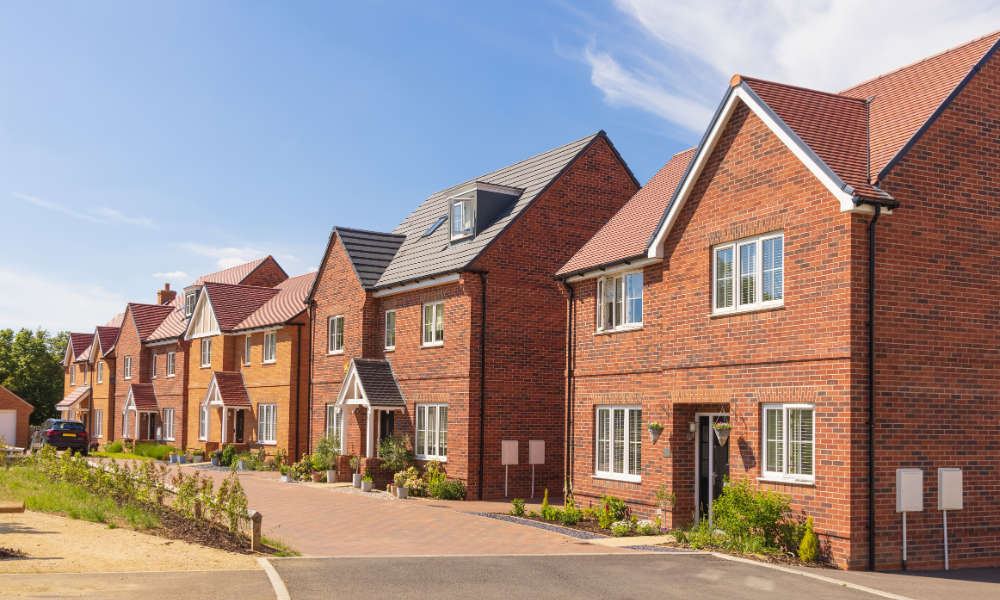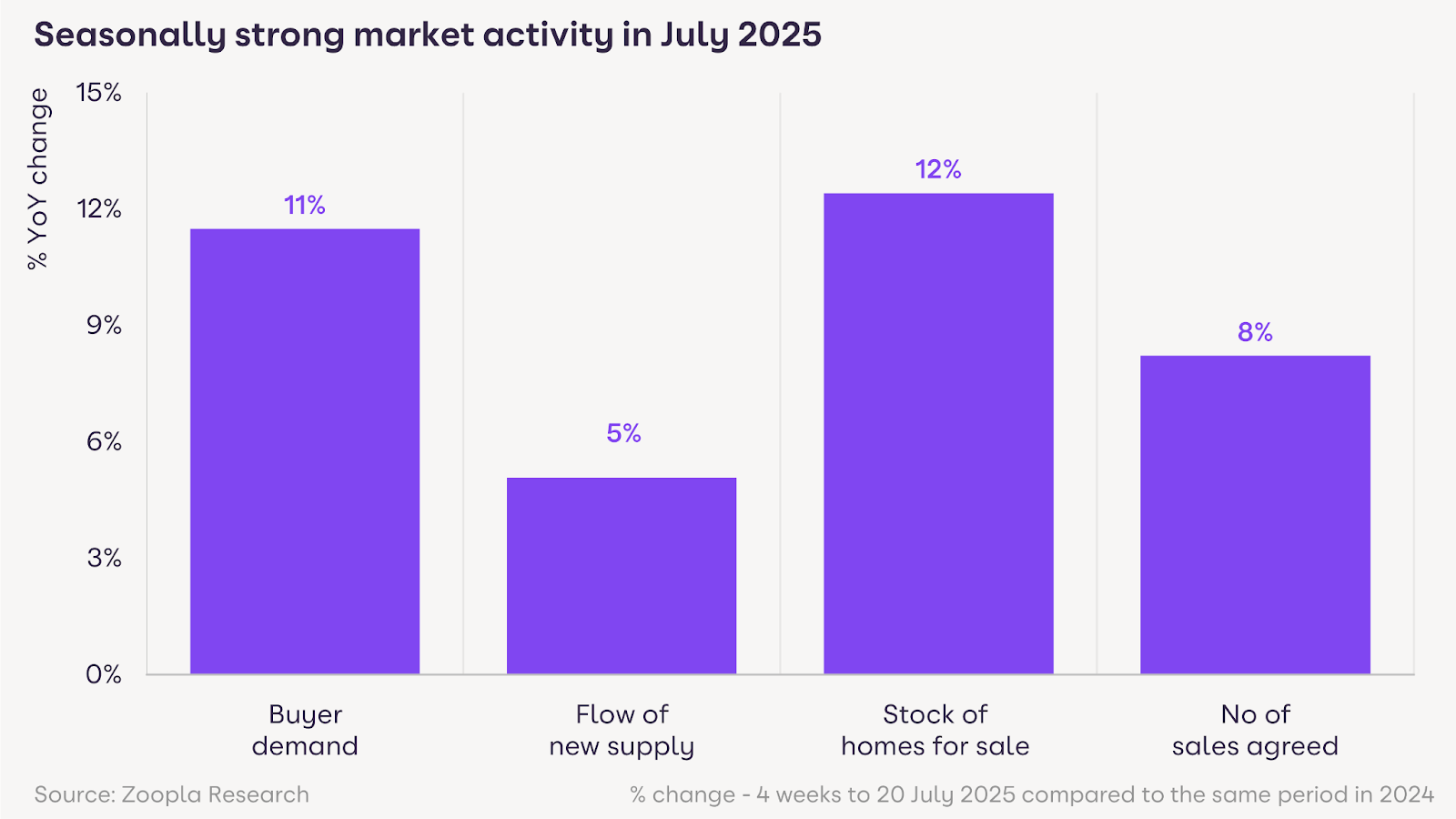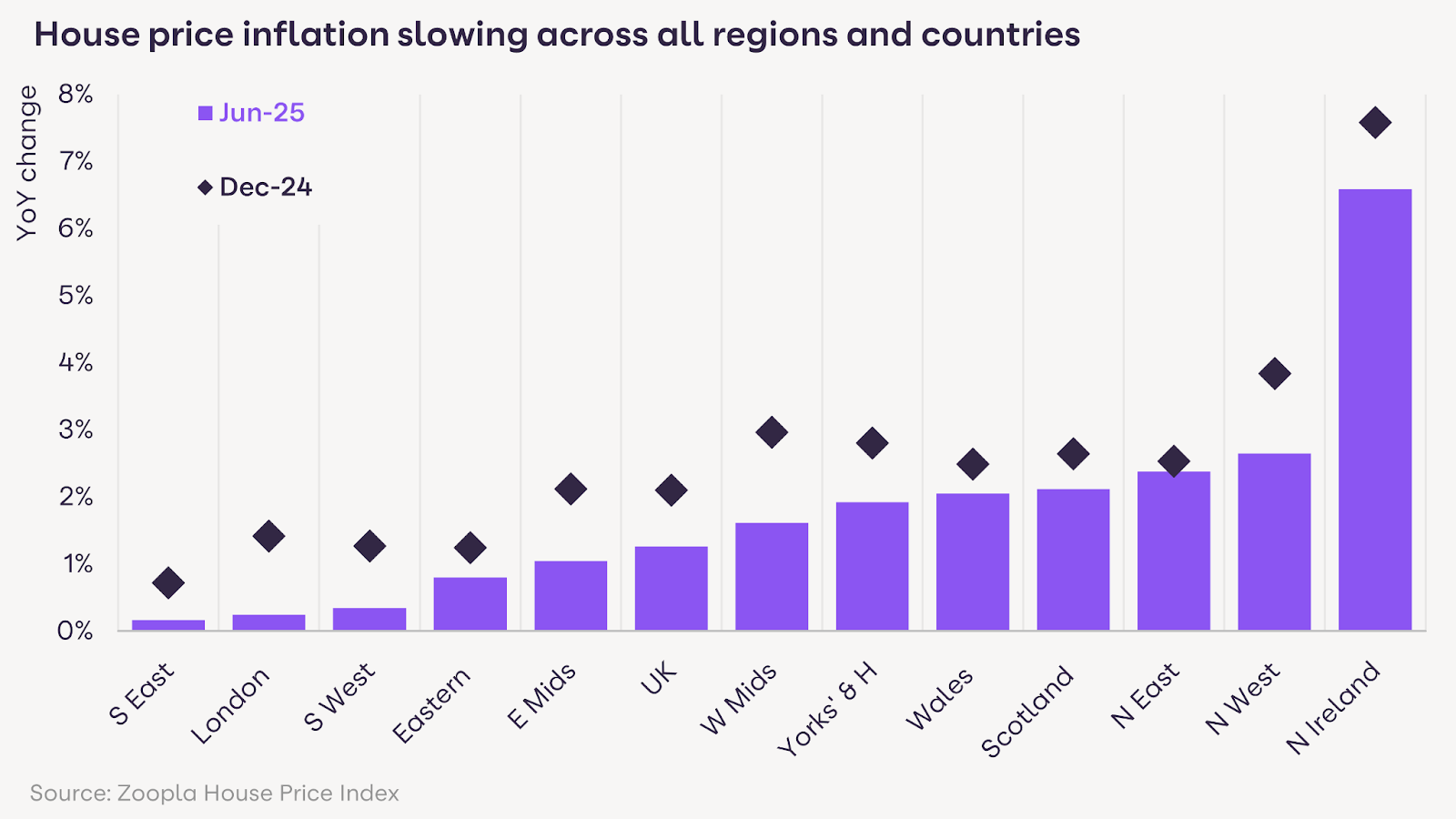But April’s stamp duty change weighs on property prices

Housing market activity in the UK has increased in July 2025 compared to the same period last year, according to Zoopla’s latest House Price Index.
Buyer demand is up by 11%, with agreed sales rising by 8%. The number of homes available for sale has reached a record average of 37 per estate agent branch, as more buyers seek to complete transactions before the school holidays and the typical August market slowdown.
Zoopla attributed the uptick in activity to recent changes in mortgage affordability assessments. Buyers using a mortgage can now borrow up to 20% more at the same rate than three months ago. This has prompted more people to move forward with purchases, leading to higher demand and sales across all regions and countries of the UK.
An increase in housing market activity typically leads to more opportunities for mortgage brokers, as higher buyer demand and sales translate into greater demand for mortgage products and advice. Brokers may see more client enquiries and applications, but must also navigate changing affordability rules, stamp duty costs, and shifting consumer confidence.

“Broadly in balance” is how Richard Donnell, executive director at Zoopla, described the current housing market. “We’re seeing healthy levels of demand and sales, but this isn’t sparking faster price inflation,” he said. “In fact, more homes for sale, particularly across southern England, is reinforcing a buyer’s market, keeping price rises in check.
“Many more home buyers are paying stamp duty since April and want this extra cost reflected in the price they pay. While mortgage rates are holding steady, less stringent affordability testing has boosted buying power and is supporting more sales despite increased uncertainty.”
Nathan Emerson, chief executive officer at Propertymark, said the market is showing positive signs as the year progresses. “As the year advances, it remains upbeat to witness greater levels of market activity when compared to only twelve months earlier,” he said. “Both affordability and consumer confidence continue to steadily improve, with more competitive mortgage products gradually finding their way to the market.
For David Powell, chief executive of Andrews Property Group, the market is “continuing to find its new normal since the stamp duty incentive was withdrawn at the end of March 2025.”
Higher stamp duty impacts house price growth
The end of temporary stamp duty reliefs in April has increased costs for buyers in England and Northern Ireland, putting pressure on house price inflation. Currently, 83% of homeowners pay stamp duty on new purchases, up from 49% before April 2025. The additional cost can reach £2,500 per sale, about 1% of the average UK home price. Buyers are expected to factor these higher costs into their offers, which may affect agreed sale prices.
Stamp duty impacts existing homeowners and first-time buyers differently. The tax, based on property value, has a greater effect in southern England, where property prices are higher. First-time buyers are charged lower rates and typically purchase less expensive homes, but 41% are now subject to stamp duty, compared to 19% before April 2025. The biggest impact is seen in London and the South East, where the average first-time buyer in London now faces a £6,100 stamp duty bill, up from £0 before April.
The increase in homes for sale is also contributing to slower house price inflation. Zoopla’s index reports that the annual rate of price inflation has dropped to 1.3%, with the average UK house price at £268,400 — a £3,350 increase year-on-year. Despite the rise in market activity, the 12% growth in housing supply has reinforced a buyer’s market, providing more choice and keeping offers competitive. While price growth has improved from 0.4% last June, it is down from 2.1% in December 2024.

Regional differences remain pronounced. Northern England, Scotland, and Wales are seeing annual house price inflation between 2% and 3%. Northern Ireland leads with a 6.1% rise, and Belfast records 7.8% growth, though from a lower base. In contrast, southern England has the slowest price growth, with rates below 1%. The South East and London both report 0.2% inflation, while the South West is at 0.3%. Some areas, including Truro, Torquay, and Exeter, have experienced price declines of -1.3%, -1.2%, and -1.1%, respectively.
“At the start of the year, we predicted house prices would rise just two per cent, at the lower end of forecasts for house price inflation,” Donnell said. “Prices are on track to be 1% higher over 2025, half the level forecast.
“Greater supply of homes for sale and mortgage rates remaining higher than expected are the key reasons for weaker growth. Low house price inflation is not a bad thing, so long as there is enough market confidence for people to list their homes and make bids to buy homes.”
“The market continues to show incredible resilience,” Powell added. “However, the slowdown in house prices is starting to impact consumer confidence illustrated by the increased numbers of properties currently on the market for sale.”
Looking ahead, Powell said that without a reduction in interest rates or government intervention, it is difficult to see any material change for the second half of the year.
“The obvious and immediate route is to create a more palatable and permanent solution to stamp duty to help ignite the market,” he stated. “The government will certainly need a more flamboyant market to provide confidence to developers to build towards the targeted 1.5 million homes. The affordability challenge to buyers remains, and I would advocate for immediate remedies to help consumers buy with confidence.”
According to Emerson, the government may need to reconsider the real world effects that increased Stamp Duty thresholds across England and Northern Ireland have caused, to better invigorate the market across the long-term.
“It remains vital the UK government and devolved administrations meet their individual housing targets to keep pace with anticipated demand over the forthcoming years and to ensure there is a viable mix of affordable housing constantly flowing into the marketplace for those who aspire to buy,” he stressed.
Want to be regularly updated with mortgage news and features? Get exclusive interviews, breaking news, and industry events in your inbox – subscribe to our FREE daily newsletter. You can also follow us on Facebook, X (formerly Twitter), and LinkedIn.



